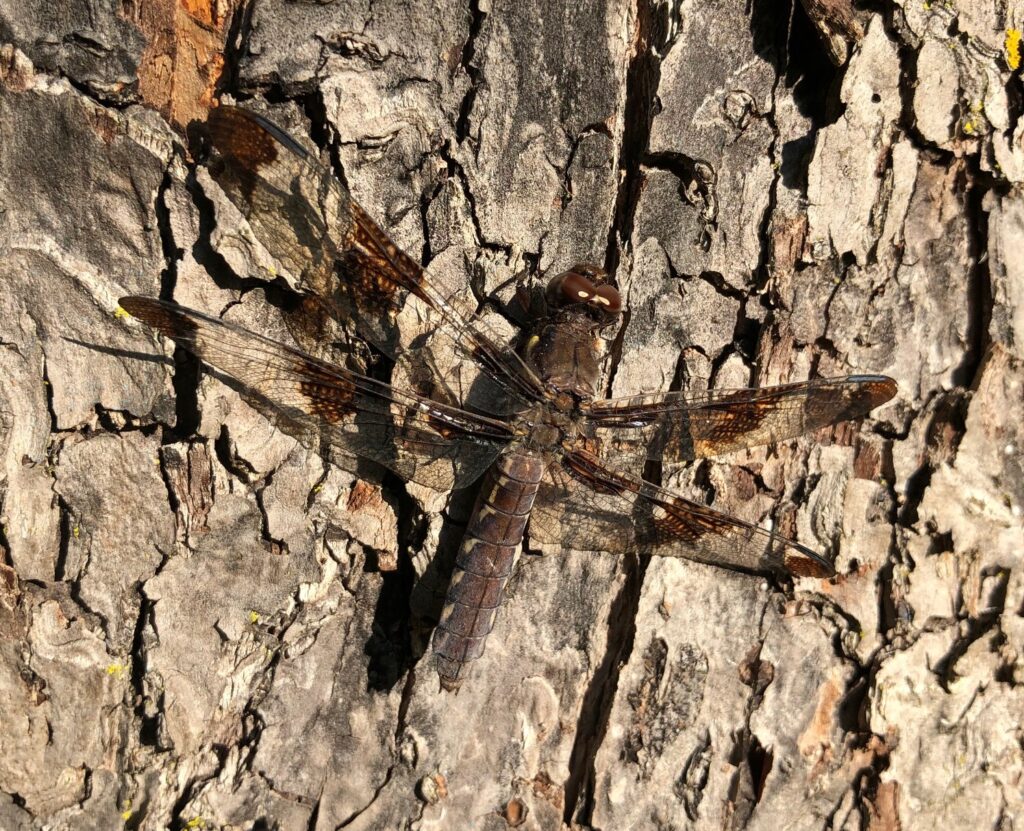
When I worked with the Canadian Aboriginal Festival and Pow-wow in Toronto many years ago, I was very fortunate to work with an Indigenous woman named Ilona Stanley. Ilona told me that dragonflies symbolize that all things are possible, and she gave me a beautiful birchbark biting in the shape of a dragonfly. The birchbark is framed in silver, on a tan leather cord to go around the neck.
I think of Ilona every time I see a dragonfly. She appears in a poem and small book art piece I made, which you can check out here if you’re so inclined.
Ilona was Ojibwe from Waywayseecappo First Nations in Manitoba, and one of the last remaining birchbark biting artists in the world. She was selling her art in the marketplace at the Festival the year that I met her. Sadly, Ilona passed away not long later, in 2007. Her birchbark bitings and other art works are in private and public collections worldwide.
I’ve since read online that dragonfly symbols often signify swiftness, as well as transformation, the constant process of change, and rebuilding after hardship. I read somewhere that “To wear the dragonfly symbol is to encourage forward movement.” I particularly like this concept right now, as we are 5 months into the pandemic, and at a turning point as we prepare for life this autumn.
Dragonflies have been on earth for more than 300 million years.
There are more than 5,000 species of dragonflies in the world, and approximately 150 different dragonflies in Ontario. The one I photographed on the East Don Trail / Moccasin Trail Park in Toronto looks to me a female Common Whitetail. (I used Ontario Nature Magazine’s online resource to look it up.)
Thanks to their two sets of wings, dragonflies are phenomenal at flying. They can fly straight up, down, backwards, upside down, and hover – and they can go more than 50 km/hour!
If they can’t fly, they’ll starve because they only eat prey they catch with their feet while they are flying. Smithsonian Magazine has written that the flight of the dragonfly is so special that it has inspired engineers who dream of making robots that fly like dragonflies.
According to Wild City by Doug Bennet and Tim Tyner, most dragonflies names come from how it lays its eggs. There are skimmers who skim waters surface dropping their eggs to sink to the bottom to hatch. Darners slice open stems of water plants just below the surface and lay their eggs inside the plant. “Spiketail dragonflies swiftly dunk into the shallows to inject one egg at a time into the bottom, while in weedy waters, basket-tails drop just one big pay load of eggs, which are string together, and become strewn over submerged vegetation.”
Females can lay from 500 to more than 3,000 eggs. Dragonfly larvae eat whatever they can find in the water, including mosquitoes, fish, tadpoles, and larvae of other insects. Smithsonian Magazine says that, “at the end of its larval stage, the dragonfly crawls out of the water, then its exoskeleton cracks open and releases the insect’s abdomen, which had been packed in like a telescope. Its four wings come out, and they dry and harden over the next several hours to days.”
Yeah, it basically cracks open its own body and unfolds its new self out. How amazing is that.
